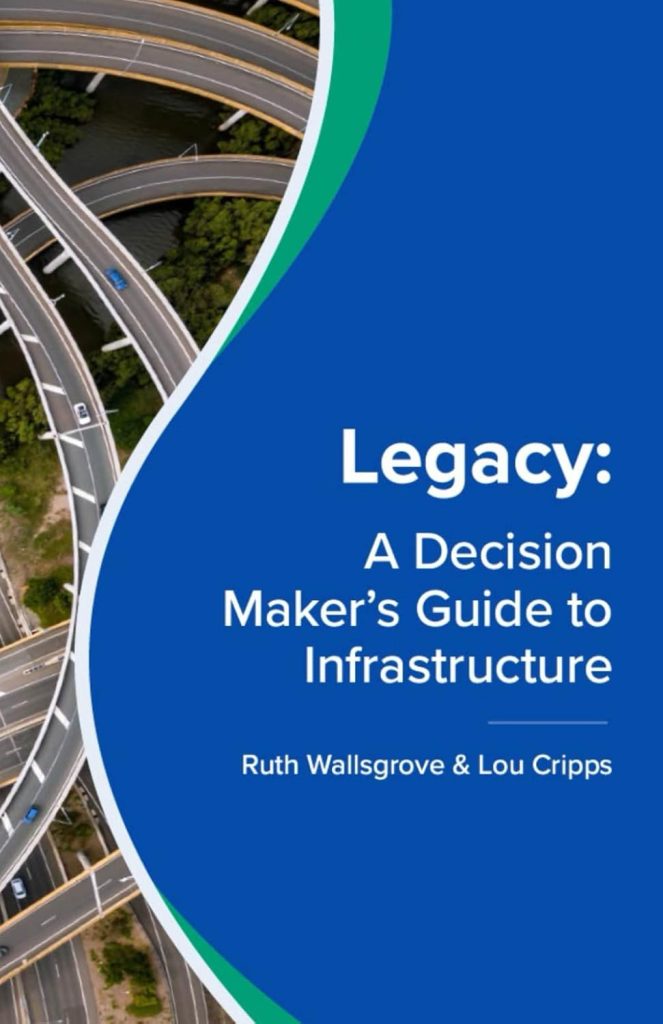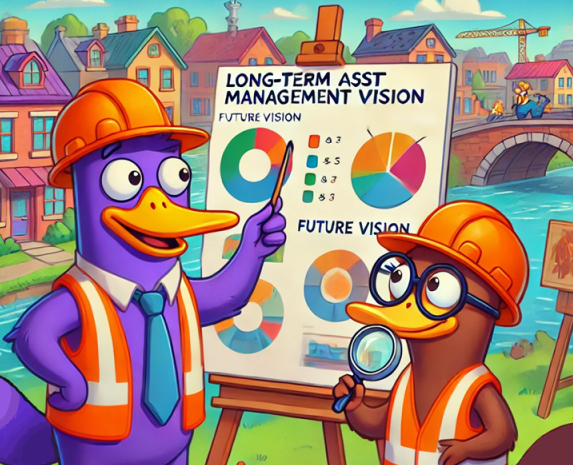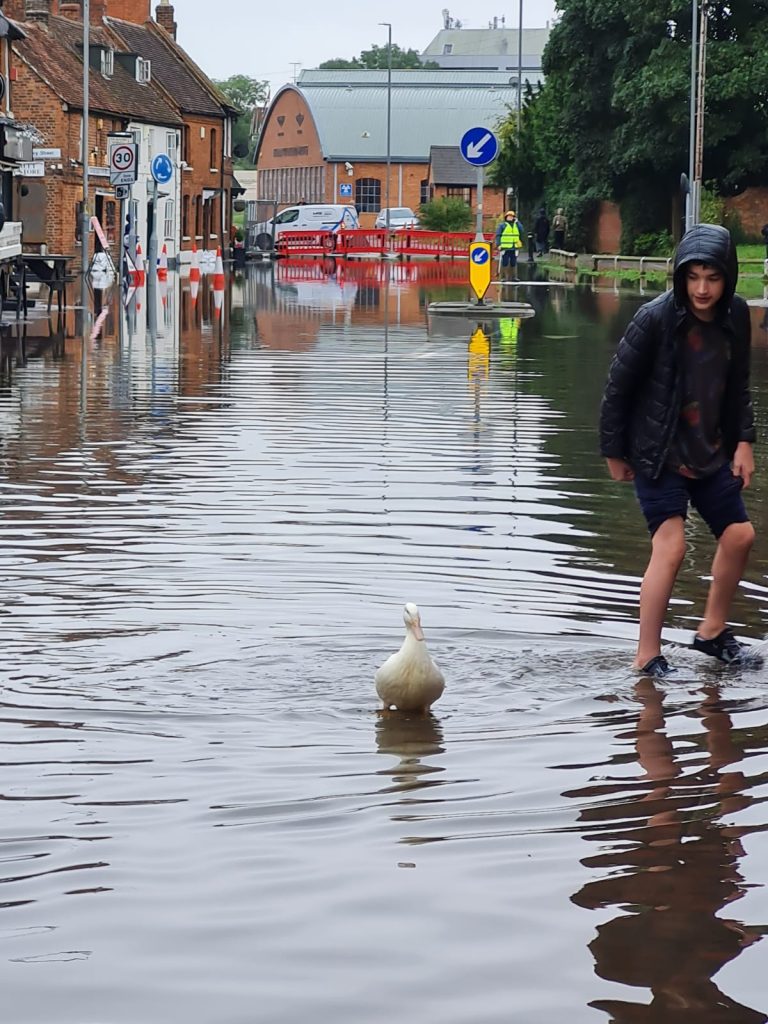
Memorial to Jules Verne, Amiens, ID 381624172 © Linda Williams | Dreamstime.com
One way to put my life in context is: when I was born, Robert Heinlein was king of science fiction.
Not that I knew this until ten or so years later, when I started to read my family’s collection of sci fi Penguins. We, naturally, also favoured British writers, who, if not noticeably more female or non-white, were at least less American gung-ho.
Now, the world of the future is very different, with some ‘non-binary’ writers, Afrofuturism, and radical ecologies. And good aliens, my favourite.
Between then and now, there have been a lot of post-apocalyptic dystopias, which I tend to keep away from. Post-scarcity anarchism is much more my thing (see Ursula K LeGuin, and Iain M Banks’ ‘Culture’, for example).
And hope.
If one defining feature of good Asset Management is developing longer term planning, and infrastructure urgently requires a future vision, can hopeful science fiction help us?
What’s your most inspiring example of a fictional future?
And a vision of future infrastructure?

30199342 | Happy © Michal Bednarek | Dreamstime.com
They say you should not have favourites among your children. But I found it impossible not to have favourite clients.
I always enjoyed some individuals, some asset managers in particular. More than being nice people – which they were – it was about understanding each other, speaking the same language. Many others I worked with over 30-plus years simply didn’t get what we were saying.
In another lifetime, I would love to figure out why I warmed to some regions more than others: why I loved asset managers in Indonesia, Malaysia, some Canada, west coast USA – and New Zealand, of course.
But favourite clients also include organisations run by the more visionary executives.
I did not always get near the C suite, or councillors. But my fondest working memories now are for those who were engaged. Taking me back to almost my earliest discussions about Asset Management change, about what is and is not possible unless there is a CEO who gets it.
Sometimes there were executives who almost got it, and those are not such happy memories. Some of them even know who they are, because I got to the point when I said this out loud, that they were not succeeding at Asset Management because of the bizarre choices they made. That they were the problem.
Happier to think about how much is possible if the top guys get it.
As opposed to industry sectors which believe in rapid turnover of CEOs who don’t stay around long enough to care about longer term plans.
Makes me think the ‘high reliability’ thinkers got it right about commitment.
How much real improvement on Asset Management is possible unless there is long-time leadership that cares?

39167631 | Cartoon Teeth © Tigatelu Dreamstime.com
Why do so many organisations not have good long term plans for their assets? Why don’t they stick to their Asset Management strategies?
Being continually sucked back into short term reaction is one problem for infrastructure (and the more political the sector – such as transit – the worse it is).
And forgetting. New CEO, new CFO, someone coming in that simply hasn’t thought about what they are managing. Good Asset Management isn’t built into the furniture, the basic business processes enough. Someone ignorant of AM comes in and doesn’t even know what they are abandoning.
The need for tighter regulation may be, as Lou Cripps has said, just evidence that a sector isn’t doing a good job.
But I am coming to think that mandatory audit – as in government audit offices, or even internal audit enforced by non-executives as part of good governance – may be a key infrastructure AM tool.
Infrastructure, managed on behalf of communities, is too important and too long term not to manage well. Decision makers – whether C suite, councillors, board members – must be held to account for their decisions.
Regulated audit is one practical way to do this. Not simply the kind of quality control envisaged in ISO 55000, more the kind of visibility (and check for legality) of an annual financial audit. Not perfect, but a lot more companies would cheat on their tax without it!
Audit is not judging by results, but checks you did what you said you would do, that you followed the processes that you claim to use. Such as evidence-based budgeting and business cases for investment.
A good decision can still lead to less than good outcomes – but making it well is all we have for the long term.
Scrutiny of the process is particularly important when making decisions for the long term. This requires clarity and sticking to your principles. Being able to demonstrate you know why you made a decision.
I suspect audit with teeth is a natural companion to good longer term, more strategic thinking about our physical assets.
What is your experience of regulation audit in Asset Management?

Our communities have delegated the management of physical infrastructure assets to us – including the worrying about the systems, the future, and change.
A key AM principle is not to kick the can down the road. For example, if you can see you will have a shortage of resources to manage the assets in ten years’ time, you have to start to deal with that now. (It will take you ten years to sort out.)
In the world of physical assets, things generally only get worse when you ignore them.
Assets degrade, and what is a small risk one day becomes a bigger risk simply through time. A failing asset that you don’t deal with becomes a more seriously failing asset.
However, human beings in general are not very good about time.
- We focus more on present benefits than future benefits
- We are not naturally good at understanding risks
- We are poor at noticing and paying attention to anything that changes relatively slowly, as opposed to immediate crises.
Generally, the people in the communities we serve won’t always have a great understanding about physical assets anyway, and are not good at thinking ahead for their future.
Communities need to be able to delegate the responsibilities to people who are good at it: who specialize not only at the engineering and maintenance of physical systems, but at managing through time, for the future as well as today.
We need to tool ourselves up, flex our through-time mental muscles. What will the decisions we make now look like to ‘future us’?
We will not always get it right, but with physical infrastructure we need to be the ones who can start to think about risk and benefits in four dimensions.
It is not obvious who else is ever going to do this!
What tools have you successfully used to manage the future?
Summarised from Legacy, our latest publication


Image from James Webb Telescope: Interacting Galaxies
After taking three months off – impressed how much surgery slowed me down! – I am taking stock.
I find I am almost totally not interested in Asset Management as a technical subject. Or rather, that I have no hope that something technical (like ‘AI’) will sort it for us.
And yet, there is still a large problem to be sorted, that surely requires new, and clever, thinking.
The Talking Infrastructure board is more or less convinced that we have not yet made Asset Management stick. In particular, to get where Penny saw 40 years ago: business as usual longer term planning to meet infrastructure demand. And more recently, planning ahead in a changing world.
One painful example is the retreat from meaningful AMPs in Australian councils, their first home.
Why infrastructure organisations don’t face the future has been a puzzle. Vested interests, for example in the construction industry, sure; lack of skill or vision in the decision-makers, yeah. Is it basically that the pain of not planning adequately doesn’t fall on the people failing to plan?
Our inability as a species to think beyond a few years?
But I am not yet that pessimistic. I don’t believe it’s biological.
What most grips me is the problem of culture. Yes, we happen to live in a peculiarly short-termist culture. But let’s, as clever people, tackle it as a Meadows-type system challenge.
In the past decade some of us have asked how we can get an organisation to plan sustainably: to have a process, a system to plan out our assets, that outlives any CEO, or any individual asset manager for that matter. A few years ago, a network of us in North America looked at how to ensure that an incoming CEO took an AMP process as given. Useful and entrenched enough not to be their focus for change.
Did we succeed anywhere?
Watch this space…

From script by Lou Cripps
The lifecycle-based Asset Management Plan was Penny’s solution to the issue of short-term thinking.
In particular, she wanted us all to look ahead at budget requirements for renewals – replacements and refurbishments of aging assets.
But planning and lifecycle thinking are needed for other challenges, too.
For me, the fundamental point is the importance of thinking ahead. Of being proactive rather than reactive, of exploiting what we already know about our assets to stop being surprised by things we can work out ahead of time.
In a week when many of us are trying not to think about WW3, we know we don’t know everything about the future. But we need to make better use of what we do know.
The problem, 40 years on, is that so many organisations don’t.
Here are just some of the questions I would wish – fairy godmother style – everyone to be able to give better answers to.
- 101, if we think we need to build some new infrastructure asset, what will it cost to maintain and operate it?
- What are the different realistic solution options – and what opportunities will we lose in choosing any of them?
- What’s the evidence that we have understood the problem and scoped our preferred option correctly? What else has to be considered in with the capital cost – like the cost of new facilities when we buy new electric fleet, for example?
- What costs and disbenefits should we also cost into the materials we choose, such as embodied carbon or damage to other communities?
- What costs and disbenefits will continue long after the physical asset is gone (think the loss of species or habitats, long-term damage to communities)?
- Do we really have any fact basis for the costs, risks and benefits of something new, as opposed to sustaining what we have?
All of these are elements of whole life cost modelling. Too bad many organisations still don’t even use basic lifecycle costs for their budgeting or strategies.
The underlying problem… is a system that doesn’t plan for the future. Is it lack of the right skills in the right place, or vested interests? Laziness??
One thing I am pretty sure is that it isn’t a lack of available information.
What do you think: just how bad, on a scale of 1 to 10, are our current infrastructure business cases?
Further good reading: Penny’s Infrastructure: we can afford to buy it, can we afford to keep it? Louise Hart, Procuring Successful Mega-Projects: How to Establish Major Government Contracts Without Ending up in Court. Joseph Berechman, The Infrastructure We Ride On: Decision Making in Transportation Investment.

44169003 © Shea R Oliver | Dreamstime.com
Regulation can be an admission of failure – failure of a sector to do what it should do.
And the realisation that many organisations only take Asset Management seriously because some branch of government tells them they must can seem like our failure, failure to convince them AM is for their own benefit.
And some stop doing it when they are no longer pushed…
What incentivises someone in a position of some power in a public agency to do the right thing? More particularly, what encourages them to think longer term?
CEOs and other senior managers have several kinds of short-term incentives: personal annual targets and maybe bonuses. Local politicians with their own short-term ambitions for re-election. Immediate approval or disapproval from their communities.
Public-sector managers can pick up assumptions about their careers from the private sector. Moving onward and upward by moving organisations – or moving on before anything catches up with you.
On the other hand, whatever their views on their own careers, people in government regulations are normally set the objective of improving the efficiency and effectiveness of what they are regulating over time.
Of course there are poor regulations, and poor regulators. One urgent concern is governments depriving regulators of teeth and funding to enforce the regulations – the UK Environmental Agency’s ability to enforce the law on sewage releases into rivers, for example.
But overall, their incentives are far more aligned to longer-term Asset Management than the average manager. They realise they can’t change things overnight, that it’s about processes and competences and a longer-term perspective. The regulators I have known are generally firm, but patient. They know they have to be.
Infrastructure is too important to be left to ambitious executives alone.
Are we working closely enough with the regulators?

From script by Lou Cripps
Sometimes, it feels too much to do it all step by step.
Most organisations I work with don’t yet have any asset plans beyond five years. Some still only have annual budgets. How do you add in changing requirements for the longer term if you don’t even ask past five years?
And how many years ago did asset managers realise you can’t plan if you don’t think about where you want to get to? (At least 20, because strategy comes before planning in BSI PAS-55 published in in 2004.) But almost no-one has properly strategic ‘asset strategies’. They literally don’t know where they want to take their assets.
Bit by bit – and maybe getting nowhere fast.
But there is an alternative, maybe. Can we describe a compelling vision of where we want to be, first?
Can we even leapfrog some of the gradualist things we currently do?
Gradualism may be personal preference, or professional training. We haven’t always been bold about our mission. Some of us are detail people.
How would it be if we really believed we have a duty of care to make a big difference to the, frankly, fairly dumb way we’ve conventionally managed infrastructure?
Todd Shepherd and Julie DeYoung describe this as a system thing. What we have is a system, or paradigm, which resists change – so tinkering at the edges doesn’t work, because the old system will just bounce back as soon as you stop pushing.
This is, of course, quite a different concept of ‘system’ from the parts and pieces idea of a ‘quality management’ approach such as ISO 55000, which instead encourages a bit by bit, start with AM policy or SAMP. Better than thinking the first step has to be IT – but possibly no more ‘sticky’.
Quicker, and less heartache, to go for undermining the whole thing with strategy and long-term planning from the start?

At least the pet duck enjoyed it
When we moved into our house, we first realised the problem when the mortgage company said we needed flood insurance, and discovered that would cost ten times the normal building and contents policy.
Until a smarter insurance company here sold us a cheaper policy based on postcode (in other words, by group of two or three houses), not Environment Agency flood areas: they spotted a market opportunity for a more precise risk assessment. Smug us!
Until six years later, and the house actually did flood.
And four years on, in late 2024, the water came to our front door twice, and overtopped the sand bags the second time.
And the risk of flooding in England is predicted to increase five-fold in the next decades under current projections for global warming.
However, Newport Pagnell is not Miami.
To be clear, our flooding is due to rain, and living next to where two rivers meet. Unfortunate timing of river surges – or someone getting the timing off on floodgates. We are nowhere near the sea and don’t get hurricanes, and so far the extent of our flooding is a few inches of water at the front of the house.
A few houses flooding a bit: you start thinking about resale values, and whether getting wet every year or so will do the brick walls and wood floorboards any good.
In South Florida, they face losing whole towns to the sea and the swamps. Many people live only a few feet above current sea levels, and the infrastructure is similarly low and at risk. They have to worry about overwhelmed sewerage systems and nuclear power plants.
Florida has such a tax-averse politics that it will come down to money for school education versus money for flood action soon for some towns. They continue to build right up to the sea and in areas only just above sea level, even as they watch the hurricanes track towards them. And of course the ruling Republicans also mostly deny climate change.
It would seem a perfect storm of human inability to face the facts.
But it is striking just how much of an issue it is for infrastructure. And that involves use of tax dollars, national insurance schemes, building codes, politics and Politics: so much more than simply technical questions.
Do we speak the right language/s to manage this?

At this end of 2024, I am more convinced than ever that the whole point of Asset Management is Planning.
Planning, as opposed to delivery – which we have been doing for decades, if not centuries. Asset Management is about thinking through what we need to deliver across our asset base, Plan before Do. (Don’t just do something, sit there.)
That is what Penny created Asset Management for.
And the central concept was lifecycle modelling, supported by cost-risk-optimisation, matched to understanding demand. When is the right time to replace, renew, maintain? What don’t we need to do?
The AMP has been the centre of Asset Management since the very beginning. As captured in state and federal requirements, as documented in the International Infrastructure Management Manual from the IPWEA.
We need Planning – and it is not going to happen without us.
But it is too often still – after 40 years! – fragmentary, driven by vested interests (even the understandable wish by people on the ground to get money for their own assets).
It doesn’t look at what happens next: ‘And then what?’
And I can count the organisations I work with that actually do lifecycle cost modelling or cost-risk optimisation on the fingers of two hands.
To do the maths on all the major costs, risks and benefits of different options across the lifecycle, and demonstrate that (for example) building back rural roads like for like after they have been washed away for the fourth time in five years simply doesn’t add up.
Time for a Campaign for Honest Asset Management Planning?

Recent Comments